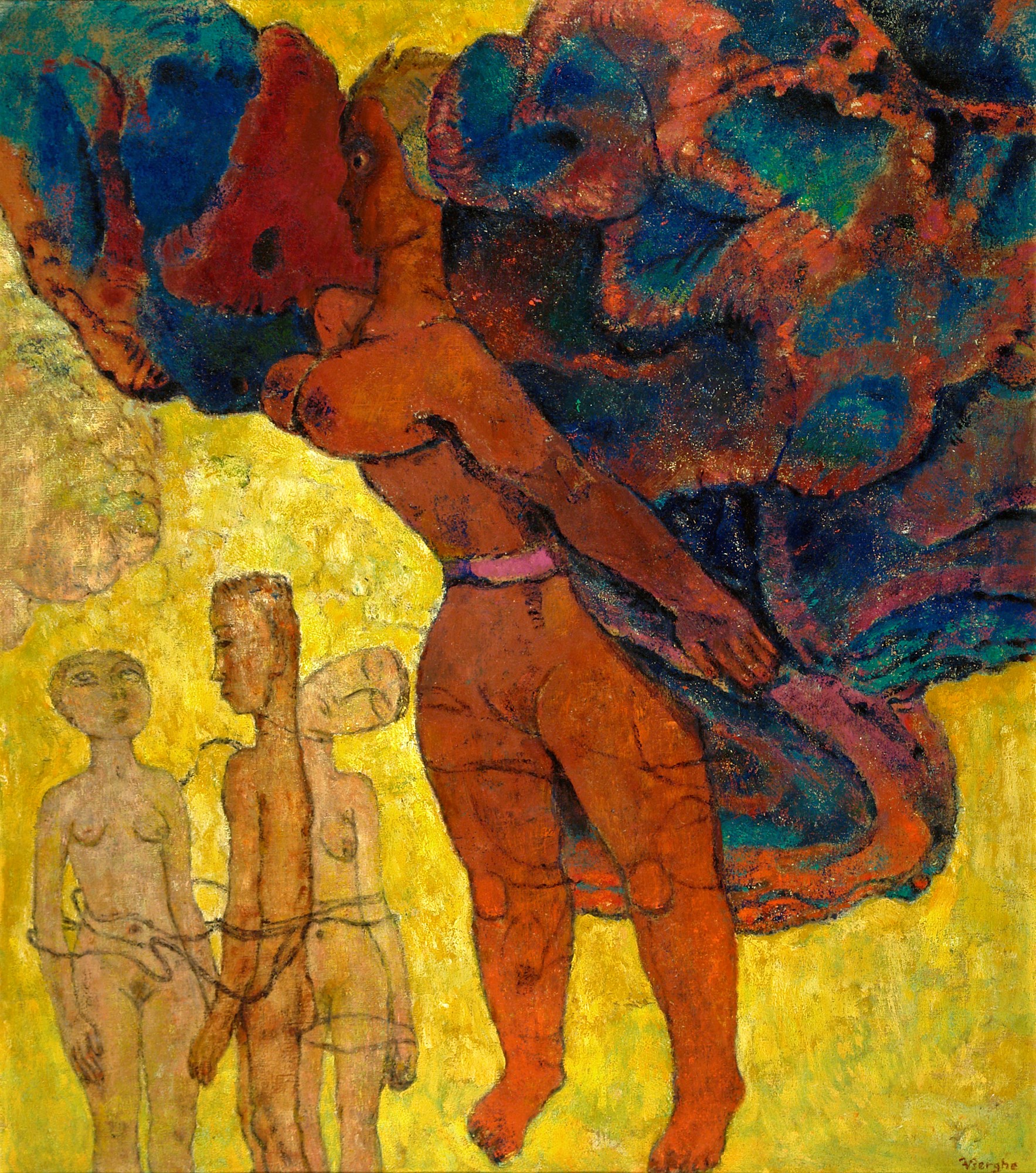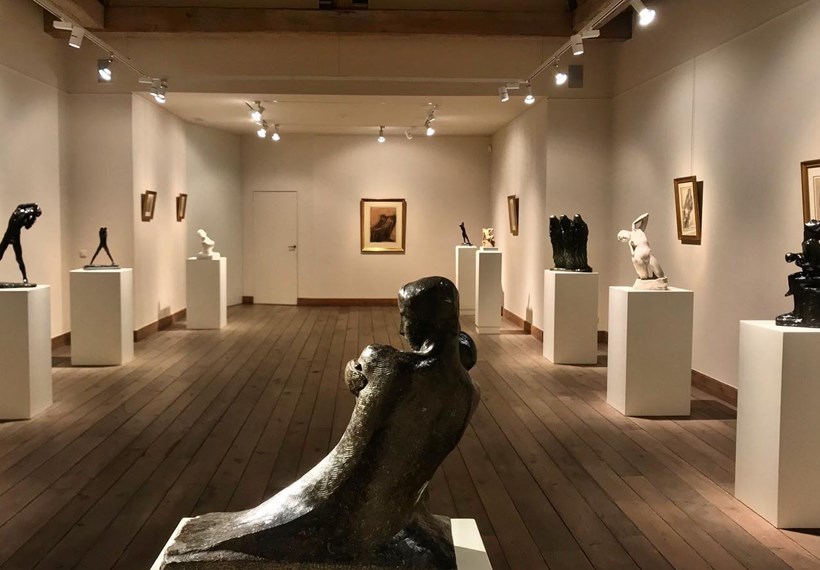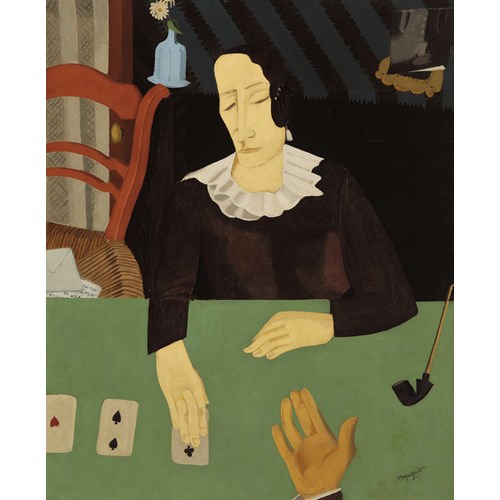Frits Van den Berghe
Cruel angel
Date 1932
Epoque Surrealism, 1930s, 1930-1940
Medium Oil on canvas
Dimension 76 x 67 cm (29⁷/₈ x 26³/₈ inches)
Dimension avec cadre 96 x 87 cm (37³/₄ x 34¹/₄ inches)
Date: 1932
Epoque: Surrealism, 1930s, 1930-1940
Medium: Oil on canvas
Signature: Signature lower right: FVBerghe
Dimension: 76 x 67 cm (29⁷/₈ x 26³/₈ inches)
Provenance: - Collection Edward Anseele Jr., Ghent (purchased from the artist).
Literature: - Langui, E., Frits Van den Berghe. Catalogue raisonné de son oeuvre peint (Brussels: Laconti, 1966), no. 397 (ill.).
- Langui, E., Frits Van den Berghe 1883-1939 (Antwerp: Mercatorfonds, 1968), p. 313, no. 397 (ill.).
- D'Haese, J., Aspekten van het Vlaams Expressionisme, exh. cat. (Marke: Kunstkring Joost De Clercq, 1977), p. 35, 37, cat.no. 93 (ill.).
- Boyens, P., Frits Van den Berghe (Ghent: SD&Z, 1999), p. 294, 321, 460, no. 756 (ill.).
- Boyens, P., & G. Marquenie, Frits Van den Berghe, exh. cat. (Ostend: PMMK, 1999), p. 174, no. 147 (ill.).
- Pauwels, P.J.H., Comme un miroir étincelant (Sint-Martens-Latem: Galerie Oscar De Vos, 2019), p. 294 (ill.).
Exhibition: - 1933, Ghent, Feestpaleis van Vooruit, Frits Van den Berghe en Joseph Cantré, 30.04-12.05.1933, no. 13.
- 1976, Sint-Martens-Latem, Latemse Kunstkring, Frits Van den Berghe 1883-1939, 22.08-12.09.1976, no. 13.
- 1999, Ostend, PMMK, Retrospectieve Frits Van den Berghe, 16.10.1999-13.02.2000, no. 147.
Plus d'œuvres d'art de la Galerie







_T638903405021531344.jpg?width=500&height=500&mode=pad&scale=both&qlt=90&format=jpg)

